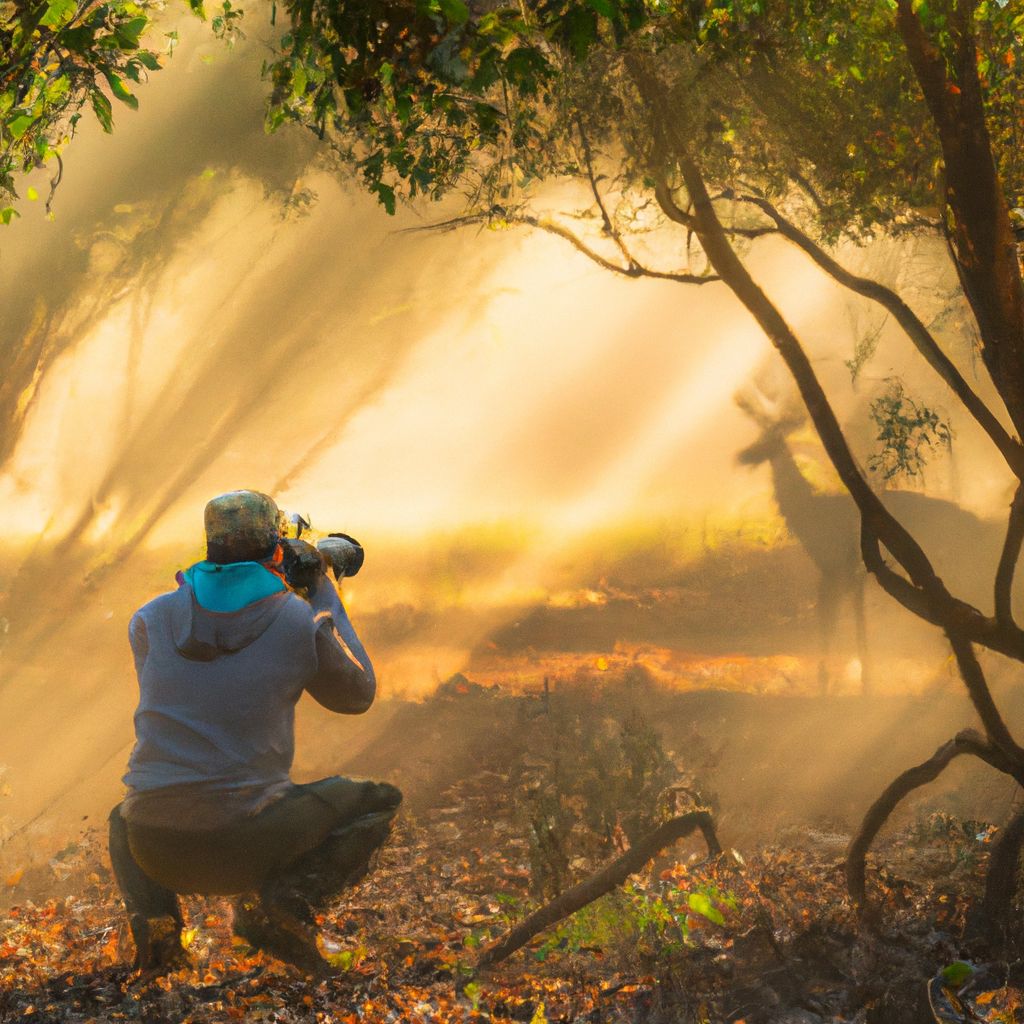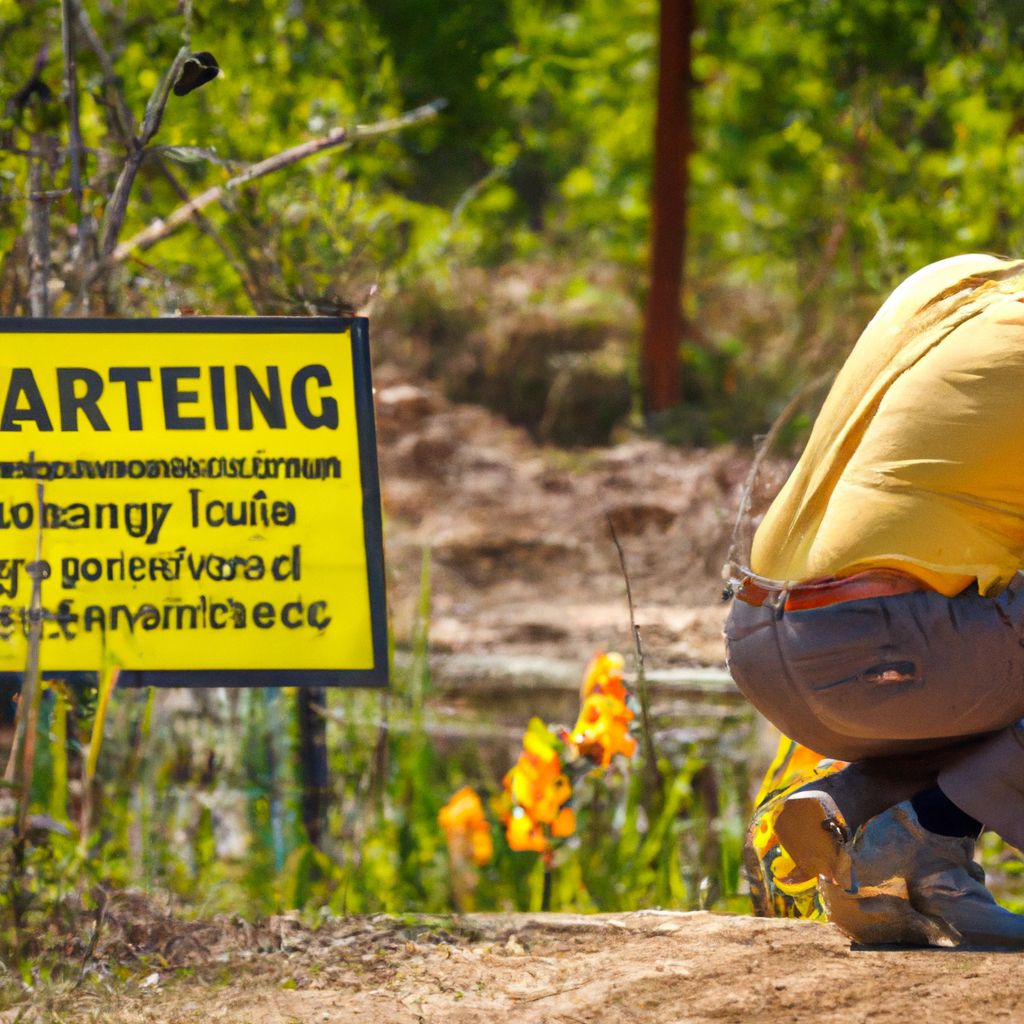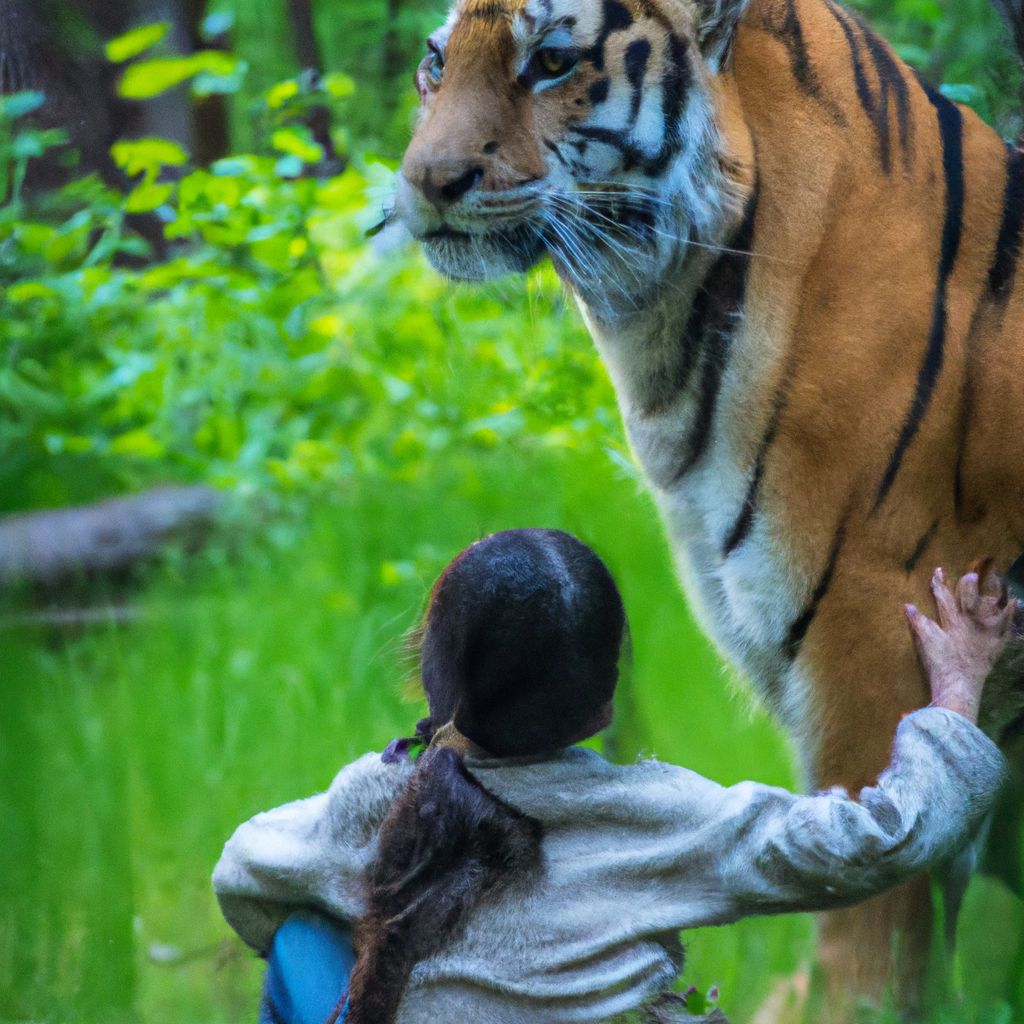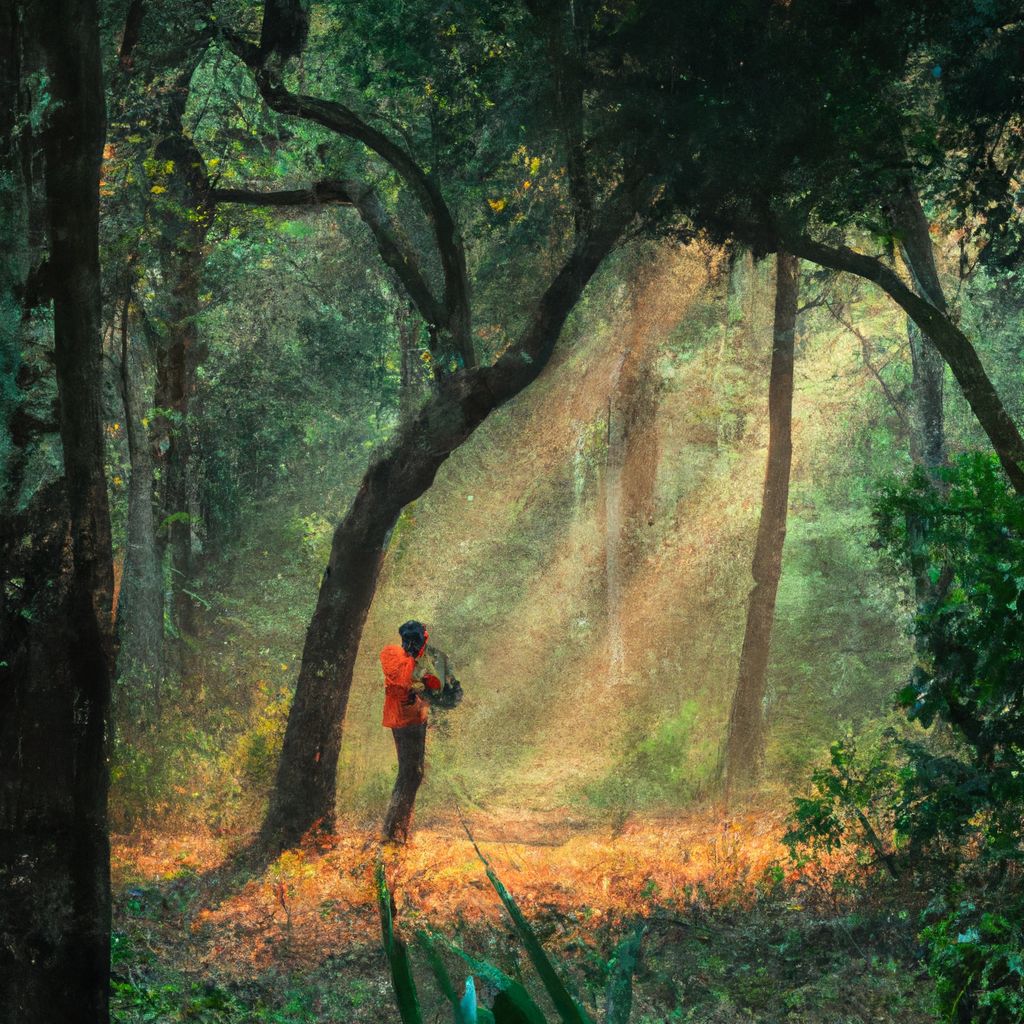- Introduction to Wildlife Conservation and Photography
- The Basics of Wildlife Conservation
- Wildlife Photography: A Tool for Conservation
- Getting Started with Wildlife Photography
- Conservation Photography Projects
- Legal and Ethical Aspects of Wildlife Photography
- The Power of Images in Conservation
- Conclusion: The Role of Individuals in Wildlife Conservation
Introduction to Wildlife Conservation and Photography

Wildlife conservation is a critical aspect of maintaining the earth's biodiversity and ensuring our planet's health. It involves the protection of endangered species and their habitats, with the goal of preserving the natural world for future generations. According to the World Wildlife Fund (WWF), our planet is currently losing species at 1,000 to 10,000 times the natural rate. This alarming statistic underscores the importance of concerted conservation efforts.
Photography plays a vital role in wildlife conservation. It is not just an art form, but a powerful tool that brings the beauty and fragility of the natural world to the forefront of human consciousness. Photography serves as a visual document that highlights the need to protect these wild spaces and the creatures that inhabit them.
Wildlife photography helps raise awareness about the state of our planet's biodiversity. It provides an intimate look into the natural world, revealing the lives of animals in their habitats. This visual representation can inspire empathy and encourage individuals to take action, contributing to the broader efforts of wildlife conservation.
The intricate relationship between wildlife conservation and photography is one of symbiosis. As photographers capture the majesty and vulnerability of wildlife, they simultaneously contribute to raising awareness about the importance of conservation. Their images serve as a call to action, prompting viewers to engage with conservation initiatives or even sparking interest in pursuing careers in the field.
Wildlife photography's impact extends beyond individual viewers. It also influences policy and decision-making in environmental conservation. Images that depict the harsh realities of habitat loss, climate change, and poaching can persuade policymakers to implement or strengthen laws that protect wildlife.
Ultimately, the alliance of wildlife conservation and photography is a powerful force for preserving our planet's biodiversity. Through the lens of a camera, we can appreciate the profound beauty of the wild and understand the urgent need to protect it.
The Basics of Wildlife Conservation

Wildlife conservation is a multifaceted discipline that involves a range of strategies and efforts aimed at preserving the earth's biodiversity. The International Union for the Conservation of Nature (IUCN) defines conservation as the "management of human use of the biosphere so that it may yield the greatest sustainable benefit to present generations while maintaining its potential to meet the needs and aspirations of future generations."
The importance of wildlife conservation cannot be overstated. It preserves the ecological balance of nature, ensures the survival of endangered species, and maintains the health of ecosystems. It also has significant cultural, economic, and scientific value. For instance, many medicines are derived from plants and animals, highlighting the importance of conserving these natural resources.
Individuals, communities, organizations, and governments all play critical roles in wildlife conservation. From adopting sustainable practices and supporting conservation initiatives to implementing laws and establishing protected areas, efforts at every level are crucial. According to the National Geographic Society, as of 2018, about 15% of the world's land and 7% of its oceans were protected in parks and reserves.
Protected areas such as national parks, wildlife sanctuaries, and biosphere reserves are integral to wildlife conservation. These areas support biodiversity by providing habitats where species can thrive without significant human interference. They also serve as research sites for scientists and, in many cases, allow for responsible tourism that generates revenue for conservation efforts.
Conservation organizations around the globe, such as the WWF, Conservation International, and the Wildlife Conservation Society, carry out extensive work in wildlife protection. These organizations conduct research, advocate for stronger environmental policies, and run programs that aim to protect endangered species and their habitats.
International initiatives, such as the Convention on Biological Diversity and the Convention on International Trade in Endangered Species of Wild Fauna and Flora (CITES), also play a significant part in global conservation efforts. These conventions encourage cooperation between countries and set standards for the protection of biodiversity.
Wildlife conservation is a shared responsibility, requiring concerted efforts from all sectors of society. By understanding its importance and implementing effective strategies, we can ensure the survival of our planet's diverse and precious wildlife.
Wildlife Photography: A Tool for Conservation

Wildlife photography is much more than a mere hobby or profession; it serves as a powerful tool for conservation. By capturing the beauty, diversity, and fragility of wildlife, photographers can raise public awareness about the threats facing these creatures and their habitats. They can inspire action and contribute to scientific research, making photography a crucial ally in conservation efforts.
Photographs have a unique ability to evoke emotions and foster connections between viewers and the subjects they depict. When people see images of majestic elephants, rare birds, or elusive marine creatures, they are often moved by their beauty and complexity. These images can raise awareness about the plight of these animals and the urgent need to protect them. The renowned wildlife photographer, Ansel Adams, once said, "Photography is more than a medium for factual communication of ideas. It is a creative art."
Photographs can also inspire action. Images that depict the harsh realities of habitat loss, climate change, and poaching can motivate viewers to support conservation initiatives, adopt sustainable practices, or even pursue careers in conservation. As the acclaimed wildlife photographer, Michael 'Nick' Nichols, stated, "Photography is my method for defining the confusing world that rushes constantly toward me. It's my defensive mechanism."
Furthermore, wildlife photography contributes to scientific research. Photographers often capture images of rare species or behaviors, providing valuable data for researchers. For instance, camera traps, which automatically take photos when an animal triggers an infrared sensor, have become an essential tool in wildlife research.
There are many renowned wildlife photographers whose work has significantly contributed to conservation. Among them are Paul Nicklen, who uses his striking images to raise awareness about climate change; Beverly Joubert, who, along with her husband Dereck, uses photography to advocate for big cats' conservation; and Steve Winter, whose images have brought attention to the plight of tigers.
Through their lenses, wildlife photographers allow us to see the natural world in all its splendor and fragility. Their images tell stories of resilience and survival, beauty and loss, serving as a reminder of what we stand to lose if we do not act to protect our planet's wildlife.
Wildlife photography, therefore, is not just an art form; it is a call to action, a plea for conservation. It is a testament to the power of images and the crucial role they can play in preserving our planet's biodiversity.
Getting Started with Wildlife Photography

Embarking on a journey into wildlife photography is an exciting prospect. It allows you to explore the natural world, capture stunning images, and contribute to wildlife conservation. Here, we will discuss the basics of getting started with wildlife photography, covering the necessary equipment, understanding animal behavior, tips for effective photos, and ethical considerations.
Equipment: The first step is getting the right equipment. A good DSLR or mirrorless camera that allows for interchangeable lenses is a must. A telephoto lens is also essential for wildlife photography, as it allows you to capture close-up shots from a distance, minimizing disturbance to the animals. Additionally, consider investing in a sturdy tripod for stability and a camera bag to protect your equipment.
Understanding Animal Behavior: Successful wildlife photography relies heavily on understanding animal behavior. This knowledge helps predict actions, plan your shots, and ensure your safety and that of the animals. You can learn about wildlife behavior through books, documentaries, and courses, or by spending time observing animals in their natural habitats.
Taking Effective Photos: Wildlife photography requires patience and practice. Use the rule of thirds to compose your shots, aiming to place the subject off-center for a more dynamic image. Experiment with different perspectives and focus on capturing unique behaviors or characteristics. Remember, lighting is crucial; early morning and late afternoon often provide the best natural lighting conditions.
Ethical Considerations: Ethical considerations are paramount in wildlife photography. Always prioritize the well-being of the animals and their habitats. Avoid causing stress or disturbance to the wildlife, keep a respectful distance, and never bait animals for a photo. Remember, you are a visitor in their home.
Wildlife photography is a fulfilling and rewarding endeavor. It allows you to connect with nature, create stunning visual narratives, and contribute to the crucial cause of wildlife conservation. As the renowned nature photographer, Frans Lanting, said, "I want to interpret the natural world and our links to it. It's driven by the belief of many world-class scientists that we're in the midst of an extinction crisis... This time it's us, the human race, that's doing the exterminating. I want my photographs to be part of the solution."
Conservation Photography Projects

Conservation photography projects play a significant role in documenting biodiversity, highlighting environmental issues, and promoting conservation efforts. These projects often involve collaboration between photographers, scientists, and conservation organizations, creating compelling visual narratives that inspire change. Here, we will explore several impactful projects and provide ideas for starting your own.
One of the most renowned conservation photography projects is the Photo Ark by National Geographic photographer Joel Sartore. The project aims to document every species living in zoos and wildlife sanctuaries, creating a massive visual archive of the world's biodiversity. To date, the Photo Ark has photographed over 10,000 species, raising awareness about the importance of saving these creatures from extinction.
The International League of Conservation Photographers (iLCP) is a network of professionals who undertake expeditions to document critical environmental issues. Their projects span various topics, from the Arctic's melting ice to the deforestation in the Amazon. Their images and stories are used to drive conservation efforts and influence policy decisions.
For those interested in starting their own conservation photography projects, here are a few ideas:
Local Wildlife: Start by focusing on the wildlife in your local area. Document the species present, their behaviors, and any threats they face. This project could raise awareness about local biodiversity and conservation needs.
Environmental Issues: Choose an environmental issue that resonates with you, such as deforestation, pollution, or climate change. Use your images to highlight the problem and its impacts on wildlife.
Conservation Success Stories: Document successful conservation efforts in your area or elsewhere. These positive stories can inspire others to support or initiate similar endeavors.
Endangered Species: Focus on a specific endangered species. Document their lives, threats they face, and efforts being made to save them. This project could help raise support for their conservation.
Conservation photography projects require dedication, passion, and a deep respect for the natural world. They are a powerful tool for promoting conservation, inspiring action, and fostering a connection between humans and the natural world. As the famous conservation photographer, Art Wolfe, stated, "The camera is my tool. Through it, I give reason to everything around me."
Legal and Ethical Aspects of Wildlife Photography

Wildlife photography is not only about capturing stunning images of nature; it also involves a commitment to ethical practices and legal compliance. Photographers must ensure they respect the rights of animals, comply with rules and regulations, and prioritize the well-being of wildlife over capturing the perfect shot. In this section, we will explore the legal and ethical aspects of wildlife photography.
Legal Aspects: Wildlife photography often involves legal considerations, particularly when photographing in protected areas or working with endangered species. Many national parks, wildlife sanctuaries, and other protected areas require photographers to obtain permits before conducting their work. These permits often come with specific rules to protect wildlife and habitats, such as restrictions on the use of drones or prohibitions on off-trail travel.
Furthermore, certain laws protect endangered species from disturbance. For instance, in the United States, the Endangered Species Act makes it illegal to harass threatened or endangered wildlife. Photographers must ensure they comply with these laws and any other relevant regulations in the locations they work.
Ethical Aspects: The ethical aspects of wildlife photography revolve around respect for nature and the well-being of wildlife. The primary rule is to cause no harm. This means not disturbing animals, damaging habitats, or causing stress or harm in the pursuit of a photograph. The North American Nature Photography Association's (NANPA) Principles of Ethical Field Practices is a widely accepted standard in this regard.
Wildlife photographers should always maintain a safe and respectful distance from animals. They should never bait animals, provoke behaviors, or interfere with breeding, feeding, or other essential activities. If an animal shows signs of stress or alters its behavior due to the photographer's presence, it is time to back away.
Moreover, photographers should strive to depict wildlife truthfully, avoiding manipulation that misrepresents the natural behavior or environment of animals. Any manipulation or staging should be clearly disclosed.
Respect for local cultures and customs is also essential when photographing wildlife in different regions. Photographers should seek permission when required and be sensitive to local beliefs and practices related to wildlife.
Ultimately, ethical wildlife photography is about balance. It's about balancing the desire to capture stunning images with the responsibility to respect and protect the natural world. As the renowned wildlife photographer, Tim Laman, said, "I consider myself a scientist first and a photographer second, because I believe in the power of my images to stimulate conservation efforts."
The Power of Images in Conservation

Images have a profound power to move people, to stir emotions, and to inspire action. In the realm of wildlife conservation, the power of images is particularly potent. They can change perceptions, raise awareness, and even contribute to saving endangered species. In this section, we will delve into the power of images in conservation and explore examples of wildlife photographs that have made a significant impact.
Images can be a compelling tool for education and awareness. They can bring distant wildlife and habitats into our homes, revealing the beauty, diversity, and fragility of the natural world. They can make abstract environmental issues tangible, helping people understand the impacts of habitat loss, climate change, and poaching on wildlife. For instance, the image of a polar bear stranded on an ice floe has become an iconic symbol of the impacts of climate change.
Images can also inspire action. They can evoke empathy and compassion for wildlife, encouraging individuals to support conservation initiatives, adopt sustainable practices, or even pursue careers in conservation. The image of "Sudan," the world's last male northern white rhino, taken by photographer Ami Vitale, moved millions and spotlighted the critical issue of species extinction.
Furthermore, images can influence policy and decision-making. Powerful photographs that document the impacts of environmental issues can persuade policymakers to implement or strengthen conservation laws. For instance, the images of the Amazon Rainforest fires in 2019 garnered international attention and pressure on Brazilian authorities to take action.
Wildlife photographers, through their talent and dedication, can capture moments that tell compelling stories of the natural world. Their images serve as a bridge between wildlife and humans, fostering an emotional connection that words often fail to achieve. As the renowned wildlife photographer, Paul Nicklen, stated, "I want to bring back images of these remote, beautiful, and critically important corners of the globe to show people not only what we have but also what we stand to lose."
Images, therefore, have a significant role in wildlife conservation. They are not just photographs; they are catalysts for change, for awareness, and for action. They are visual testimonials of the beauty of the earth's biodiversity and the urgency to protect it.
Conclusion: The Role of Individuals in Wildlife Conservation

Wildlife conservation is a shared responsibility that requires the commitment and efforts of all members of society. Each individual has a role to play, from adopting sustainable practices and supporting conservation initiatives to advocating for stronger environmental policies. Through these actions, we can contribute to the preservation of our planet's precious biodiversity.
Wildlife photography is a powerful tool that individuals can wield in the fight for conservation. It allows us to capture the beauty of the natural world and share it with others, fostering a deeper appreciation for wildlife and their habitats. Through our lenses, we can tell the stories of endangered species, highlight the impacts of environmental issues, and inspire action for conservation.
But wildlife photography is more than just capturing stunning images. It is also about being respectful observers of nature, practicing ethical photography, and contributing to scientific knowledge. As the acclaimed wildlife photographer, Frans Lanting, said, "I use my camera as a bridge between the people who live in the modern world and the world of wild animals."
Furthermore, individuals can support wildlife photography and conservation by purchasing prints, books, or calendars from wildlife photographers, attending exhibitions, or donating to conservation organizations. These actions help fund conservation projects, support the work of wildlife photographers, and raise awareness about the importance of preserving the natural world.
In conclusion, each of us has the power to make a difference in wildlife conservation. Whether through the lens of a camera, our daily choices, or our support for conservation initiatives, we can contribute to the preservation of our planet's biodiversity. As the famous primatologist, Jane Goodall, said, "Every individual matters. Every individual has a role to play. Every individual makes a difference."


